Infomail Wissenschaft Nr. 9 (english version, July 2022)
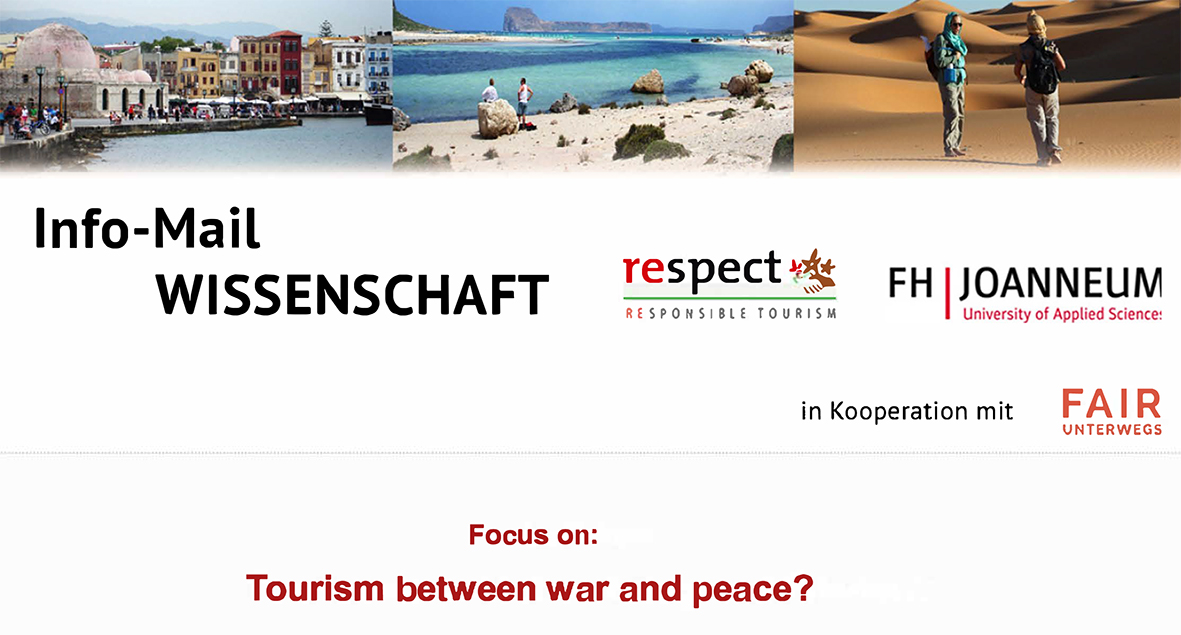
CONTENT
Timbuktu's Cultural Heritage Destroyed by Fundamentalists: Resistance to Tourist Colonization or Plain Crime? By HARALD A. FRIEDL -- read the article
Srebrenica – City of Hope. Overcoming the trenches of war and creating new perspectives with sustainable tourism. Von CORNELIA KÜHHAS -- read the article
Peace thanks to sustainability ... Or civil war through forced sustainability? By HARALD A. FRIEDL -- read the article
Timbuktu's Cultural Heritage Destroyed by Fundamentalists: Resistance to Tourist Colonization or Plain Crime?
In 2012, the mythical desert city of Timbuktu became the victim of vandalism. The young tourism researcher Lukas Schagl investigated the question of the motives of the fundamentalist perpetrators. Research on Sahara tourism has a long tradition at FH JOANNEUM.
By HARALD A. FRIEDL
Timbuktu in the north of today's Sahel state of Mali was for a long time one of the great places of longing in West Africa. Situated near the Niger River, this place was a central crossing point for caravans from Black Africa to the Mediterranean as well as eastwards towards Egypt and Mecca, which established its reputation as a rich city. With the founding of the University of Sankoré in the 15th century, the city established its outstanding cultural importance as a centre of Muslim scholarship. Its library is said to have contained around 100,000 manuscripts. Due to this outstanding cultural and historical significance, Timbuktu was designated a UNESCO World Heritage Site in 1988.
The myth of Timbuktu, situated in the middle of a magical desert landscape, has attracted curious tourists since the colonization of West Africa by France, providing the inhabitants as well as the surrounding Tuareg nomads with a modest additional income. However, these developments were always fragile. In the early 1950s, Mali's independence movement caused tourism to dry up after regional Tuareg groups had spoken out in favor of remaining part of France. As a result, the entire region was declared a restricted military area for decades. After a Tuareg rebellion against the Malian dictatorship ended with a peace treaty in the 1990s, there was a brief renaissance of regional Sahara tourism (Friedl 2008a, 2008b). With the US invasion of Iraq and the subsequent "war on terror", the security situation in the region became increasingly tense for foreign visitors (Friedl 2010). Kidnappings of Western visitors became the new "business model" (Friedl 2009a)... This development culminated in 2012 in the region around Timbuktu, the so-called "Azawads", in a military coup and a declaration of independence by Tuareg rebels. However, these were themselves ousted shortly afterwards by radical Islamic groups. These fundamentalists testified to their absolute claim to power by deliberately destroying parts of the UNESCO World Heritage Site of Timbuktu.
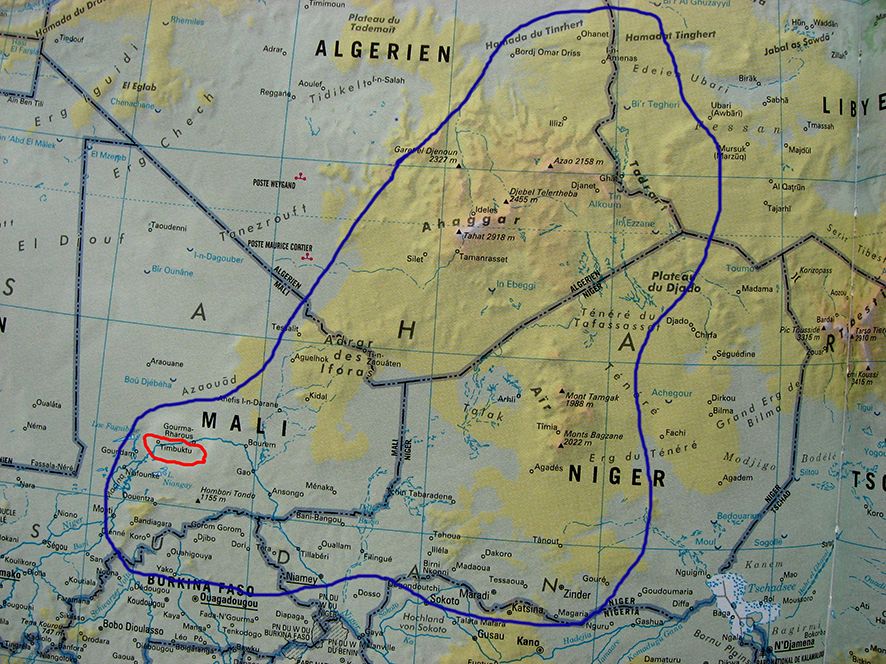
What could have motivated these jihadists to wantonly destroy UNESCO cultural sites? What political and strategic goal did they want to achieve by doing so? Lukas Schagl had chosen this question as the starting point for research as part of his Bachelor's thesis. He was also interested in the question of how this destruction was perceived and judged by relevant stakeholders in Timbuktu, whether, for example, Timbuktu's outstanding cultural significance was only an expression of a typical Western approach and thus a cultural appropriation.

For this purpose, the student of the degree program "Health Management in Tourism" at FH JOANNEUM essentially evaluated international specialist literature. In his findings, Schagl was able to prove that the jihadists' act of destruction was an ostentatious expression of their power and thus also of their dominance over other forms of Islam. For example, the perpetrators rejected the veneration of saints, which is still common in Timbuktu's current popular beliefs, as heretical (Schagl 2021).
Timbuktu was recaptured by French and Malian troops at the end of January 2013. This military intervention had far-reaching consequences for Saharan tourism. Algeria, for example, closed its borders to foreign visitors on the grounds that fundamentalists driven out of Timbuktu could seek refuge in the Algerian Sahara and kidnap Western tourists in the process. This fear was by no means far-fetched, as the Salafist group GSPC had already kidnapped 32 European tourists in the Algerian Sahara in 2003 and held some of them for 177 days (Friedl 2005).
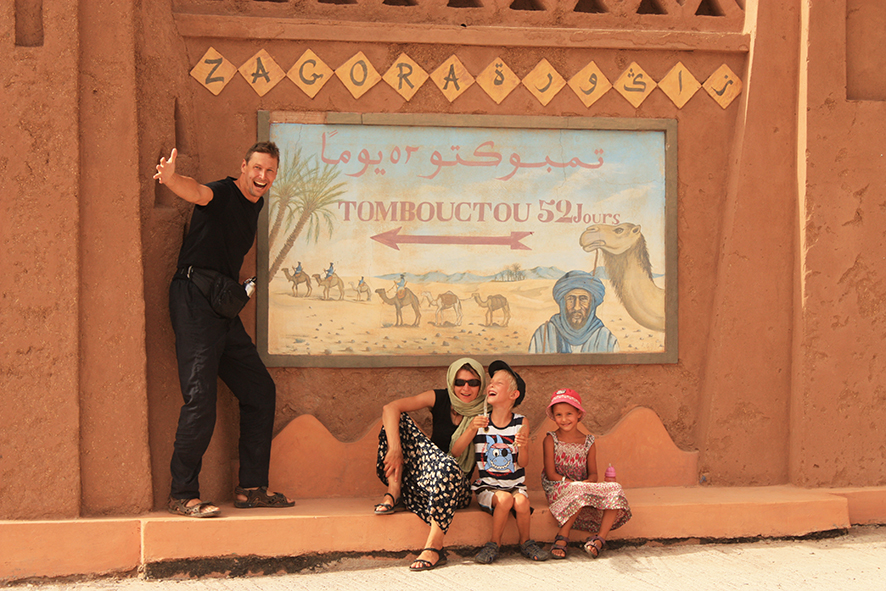
Research on Saharan tourism, its socio-cultural and political effects, and on the interaction between tourism and Tuareg rebels has a long tradition at FH JOANNEUM. Lukas Schagl's supervisor, Prof. Dr. Harald A. Friedl, had lived with the Tuareg and conducted research on tourism development there (Friedl 2009b). In the 2000s, he was a consultant on travel security issues in the Sahara. Until the military intervention of 2013, he led trekking tours to the Central Sahara for Austrian and German tour operators.
Further sources:
Schagl, L. (2021). Die Zerstörung des UNESCO-Kulturerbes von Timbuktu durch dschihadistische Milizen im Jahr 2012 aus einer Multi-Stakeholder-Perspektive. Bachelor-Arbeit, verfasst an der FH JOANNEUM, Gesundheitsmanagement im Tourismus, Bad Gleichenberg.
Friedl, H. A. (2005). Touristen-Entführungen in der Sahara – brutales Ende einer kurzen Renaissance des Sahara-Tourismus oder Symptom einer Dauerkrise im Dritte-Welt-Tourismus?, in: Pechlaner, H. & Glaeßer, D. (Hg.): Risiko und Gefahr im Tourismus. Erfolgreicher Umgang mit Krisen und Strukturbrüchen. Berlin: Erich Schmidt Verlag, 115-130.
Friedl, H. A. (2008a). Und ewig zieht die Karawane ... Kulturtourismus als Instrument zur Förderung der Tuareg-Kultur in der Region Agadez? In: Kurt Luger, Karlheinz Wöhler (Eds.): Welterbe und Tourismus – World Heritage and Tourism. Schützen und Nützen aus einer Perspektive der Nachhaltigkeit. Innsbruck: Studien-Verlag, S. 407-424. https://www.academia.edu/8504752/Und_ewig_zieht_die_Karawane_Kulturtourismus_als_Instrument_zur_F%C3%B6rderung_der_Tuareg_Kultur_in_der_Region_Agadez
Friedl, H. A. (2008b). Kulturschock Tuareg. Bielefeld: Reise Know-how Verlag. https://www.academia.edu/82617011/Kultur_Schock_Tuareg
Friedl, H. A. (2009a). Onkel Sam in der Wüste. Energie-Kolonialismus und die Folgen für den unbeschwerten Sahara-Urlaub. In: schreibkraft Nr. 18, S. 14-19. https://www.academia.edu/82617642/Onkel_Sam_in_der_W%C3%BCste_Energie_Kolonialismus_und_die_Folgen_f%C3%BCr_den_unbeschwerten_Sahara_Urlaub
Friedl, H. A. (2009b). Reisen zu den Wüstenrittern. Ethno-Tourismus bei den Tuareg aus Sicht der angewandten Tourismus-Ethik. Nordhausen: Traugott Bautz Verlag. https://www.academia.edu/82617071/Reisen_zu_den_W%C3%BCstenrittern_Ethno_Tourismus_bei_den_Tuareg_aus_Sicht_der_angewandten_Tourismus_Ethik
Friedl, H. A. (2010). Freiheit – Limitation: Peak Oil und Anti-Terror-Krieg. In: Egger, R. & Herdin, T. (Hg.): Tourismus im Spannungsfeld von Polaritäten. In FHS Forschungsgesellschaft mbH (Reihe Hg.), Wissenschaftliche Schriftenreihe der FHS-Forschungsgesellschaft (Band 2). Wien: Lit Verlag, S. 275-292. https://www.academia.edu/82618170/Freiheit_Limitation_Peak_Oil_und_Anti_Terror_Krieg
Srebrenica – City of Hope
Overcoming the trenches of war and creating new perspectives with sustainable tourism
By CORNELIA KÜHHAS
Srebrenica – the town gained sad notoriety during the Bosnian war (1992–1995): On 11 July 1995, 8,329 Bosnian Muslims were murdered. Before the civil war, Srebrenica was a well-known health resort, nestled in a picturesque natural landscape, visited by guests from all over the world. Nothing of that remains. The region is still suffering from the consequences of the war, the destruction caused by the war is omnipresent, the economic situation is correspondingly tense. With gentle nature and cultural tourism, the Bosnian Friends of Nature – Priratelji Prirode Oaza Mira – want to revive the region.
A "Child of War" Returns
Irvin Mujčić laid the foundation for this. He himself had to flee to Italy with his mother as a child. In 2014, he returned to his homeland as part of a European remembrance project commemorating the genocide of Sinti and Roma during the Second World War. Mujčić: "I was able to flee the war and survived it - that is my privilege! I want to give something back to my homeland and use my good education to build something new here in Srebrenica."
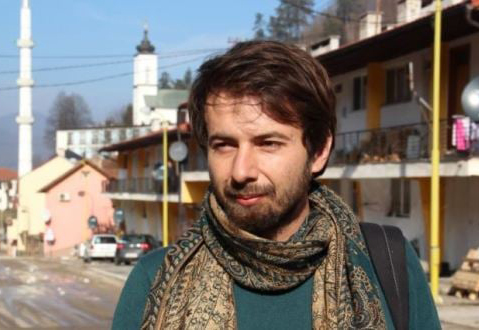
A destroyed country and destroyed souls
The damage of the war was still clearly visible and tangible in 2014 – almost 20 years after the end of the war. Before the war, 37,000 people lived in the region, today there are barely 5,000; Irvin Mujčić's home village, for example, has shrunk from 250 to 5 inhabitants. "We inherited a completely destroyed country – not only in terms of infrastructure but also spiritually and mentally. The war is still present in people's minds and souls."
Irvin Mujčić misses efforts on the part of politicians to come to terms with the war and to initiate a reconciliation process. In Italy, where he had fled to, he got to know the Naturefriends movement which has been committed to nature and environmental protection, international exchange, solidarity and peace in the world since 1895. He wants to use this international network to create new perspectives for people in his home country. He founded the local Naturefriends group "Prijatelji Prirode Oaza Mira": "The focus of our NGO is the reconstruction of our country, starting with the infrastructure and ending with the rapprochement and reconciliation of the different ethnic and religious groups."
Community-based tourism as a path to a good future
“Priratelji Prirode Oaza Mira" focuses on community-based tourism which puts the natural beauty, the traditions of the region and cultural exchange at the centre of its activities. In the years after the war, only a few tourists came to Srebrenica – most of them visited the war memorial but did not stay longer in the region. The Naturefriends want to change that. Irvin Mujčić: "The world should have a positive image of our homeland again.”
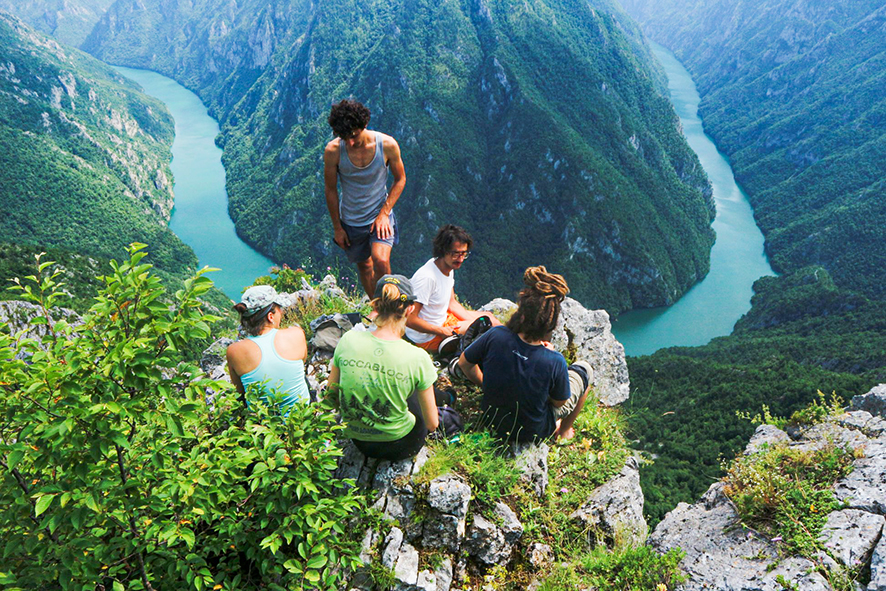
Hiking routes that connect
The area is very attractive for hiking and trekking tourism with its intact natural landscapes, forests, caves and especially the picturesque Drina Canyon. In cooperation with the Naturefriends Italy, trekking and hiking routes have been developed or revived that connect several villages. For this purpose, it has been possible to win over the villagers of five villages so far who are actively participating in the implementation. Tourists now have the opportunity to hike from one village to the next, stay overnight with host families in the villages, participate in their meals, visit local events and festivals and thus gain an insight into the culture and way of life of the local people.
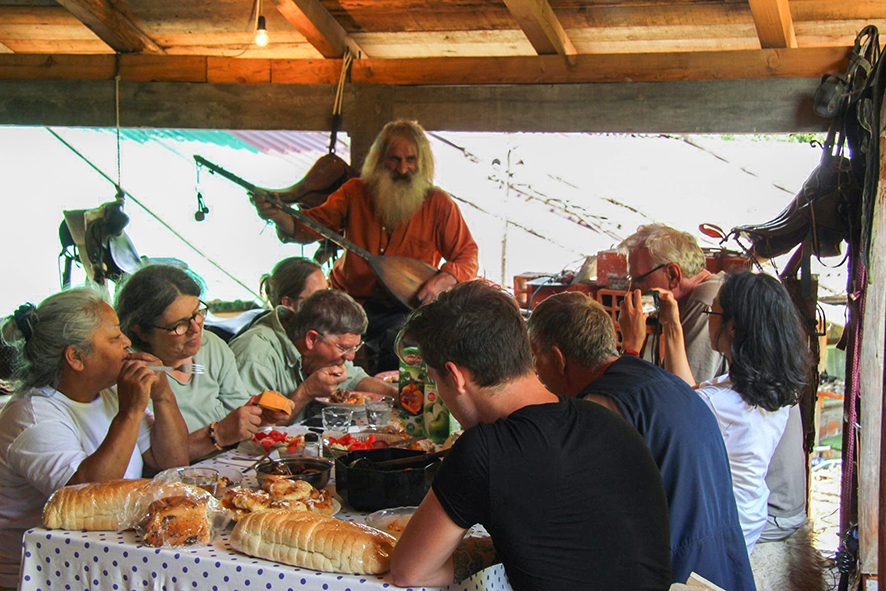
Beware of mines!
Planning hiking routes in the former war zone is a challenge due to military blast mines from the war. Michaela Niedermayr (FH Joanneum Bad Gleichenberg, degree programme Health Management in Tourism) dealt with this issue in 2016 in her Master's thesis "Conceptualisation of a cultural and adventure trekking tour in Bosnia-Herzegovina" (Konzeptionierung einer Kultur- und Abenteuertrekkingtour in Bosnien-Herzegowina). She comes to the conclusion – among others in the course of interviews with mine specialists of the Austrian Armed Forces – that due to the numerous explosive mines, the enormous potential of trekking tourism in the region is currently not possible. Mines are displaced by heavy rain or mudflows and thus pose a danger even on established routes. "Going off the beaten track ... can even be fatal. Only hiking on paved roads, with guides who know the area, is currently justifiable, although even here there is no guarantee of safety." Niedermayr also points out in her work that in addition to the mine problem an inefficient rescue system which is due to the political instability and the complex structures of the state could endanger the safety of tourists.
Of course, Irvin Mujčić is also aware of the danger posed by explosive mines. In the Srebrenica region, landmines were laid around the area that was under the control of the Bosnian army. Many of these minefields have already been cleared while existing ones are still marked, says Mujčić. "Having worked intensively on this issue and knowing the area like the back of my hand, I have managed well to select and guide the hiking trails in such a way that minefields are widely avoided and there is no danger for hikers on the designated trails."
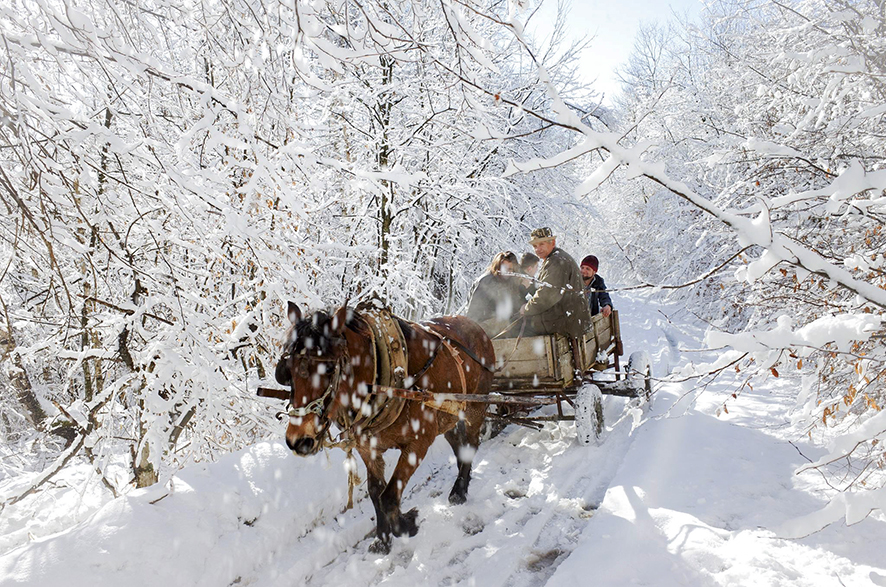
Traditions as a cornerstone for economic development and international understanding
In their tourism projects, Irvin Mujčić and his team hold traditions dear: "Here in Bosnia and Herzegovina, the Bogomil culture is something special." The Bogomils are a Christian religious community. The movement originated in Bulgaria and spread to the Balkan Peninsula between the 10th and 15th centuries. When the Ottomans reached the region, most Bogomils converted to Islam for economic reasons and much of their culture was forgotten. "But the open-heartedness and good nature of the people has remained”, says Irvin Mujčić who wants to revive this old culture with his projects. This is why the destroyed village of Kasapic – located 13 kilometres outside Srebrenica at the foot of the Kak Mountains – is being rebuilt in the traditional architectural style as a holiday village under the motto "The Time of the Bogomils". An old water mill that used to produce flour is being reactivated to supply the village with green electricity.
In the year before the COVID pandemic, around 4,000 guests visited the region. 95% of them from outside Bosnia and Herzegovina. Then the number of visitors here has also plummeted. "Surviving the first pandemic year without guests was a big challenge for us as an NGO. But we used the time to build up our holiday village," says Irvin Mujčić. This year, the Bosnian Naturefriends are again looking forward to numerous visitors* from all over the world.
The author:
CORNELIA KÜHHAS is an expert on sustainable tourism development and development cooperation at respect_NFI.
Sources:
Niedermayr, Michaela (2016). Konzeptionierung einer Kultur- und Abenteuertrekkingtour in Bosnien-Herzegowina. Master's thesis at the study programme Health Management in Tourism, FH JOANNEUM, Bad Gleichenberg.
Further links:
Srebrenica - City of Hope on Facebook: https://de-de.facebook.com/srebrenicahope/
Interview with Irvin Mujčić (2021): https://www.nf-int.org/en/about-us/conversation-naturefriends#mujcic
Virtual Journey - 30 days around the world, Station 3: Bosnia & Herzegovina https://tourismlog.respect.at/bosnien-herzegowina-nachhaltiger-tourismus-uberwindet-die-graben-des-krieges-und-schafft-neue-perspektiven/ (only german)
Peace thanks to sustainability ... Or civil war through forced sustainability?
Whether due to dwindling natural resources or far-reaching environmental and climate protection measures, the potential of conflicts on regional and national level between those who want to preserve lifestyles and those who are trying to preserve life opportunities is increasing ...
By HARALD A. FRIEDL
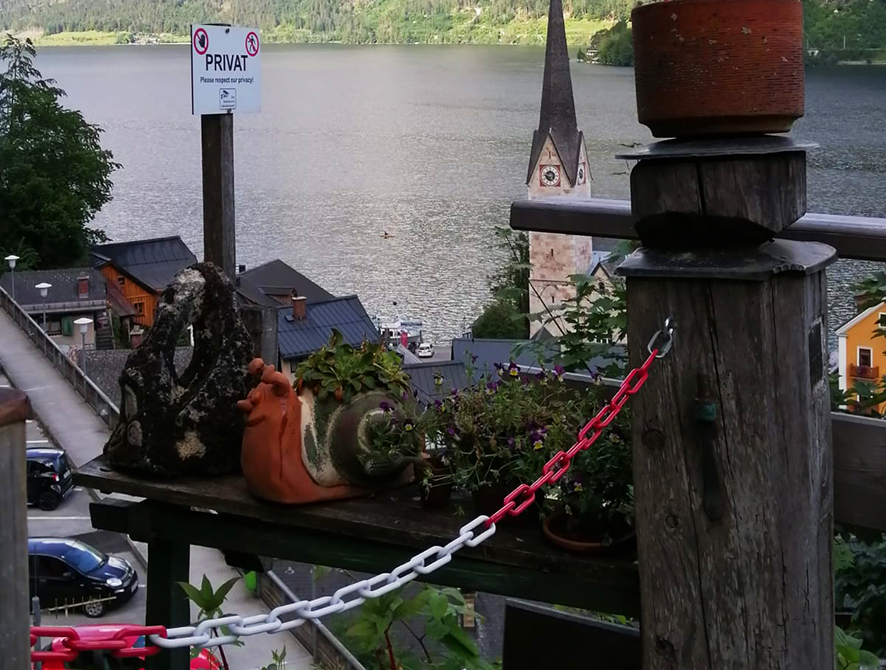
Four years ago, when the newly elected French president wanted to ambitiously tackle reforms towards an energy turnaround and introduce an environmental tax on fossil fuels, the "yellow waistcoats" demonstrated in the streets for months. Some of them even used violence to defend themselves against fuel price increases that were perceived as social discrimination and against the president's approach, which came across as domineering.
The recent riots on the streets of the Netherlands were reminiscent of these "yellow waistcoats": an army of tractors blocked traffic, manure was emptied in front of the house of the environment minister, hay bales were set on fire, politicians were threatened. This was triggered by a supreme court ruling that forces a large number of farms in ecologically sensitive zones to massively reduce the use of artificial fertilizer. The background to this is the many years of disregard for legal nitrogen emission limits in Dutch agriculture which is considered to be the cause of respiratory diseases in the affected regions, among other things. For many intensive farms, this means either switching to organic farming - or giving up farming ...
Even on the "Island of the Blessed" here in Austria we are no longer strangers to such frightening scenes since last autumn, when there were angry protests against the "deprivation of liberty" by COVID protection measures. Then, too, "critics" on social media went so far as to physically threaten politicians. In any case, these conflicts cut across all levels of society and caused many a friendship to break up.
The protesters on European soil have not yet gone as far as Trump supporters in storming central democratic institutions. But what did become clear: If one's wallet is tangibly tightened or one's personal comfort zone is affected, it inevitably becomes apparent: "the skin of civilization is thin" (Sigmund Freud). Emotions then run high and the step to violence is no longer a big one.
This raises fundamental, deeply contradictory questions in view of the urgently needed transformation of tourism towards sustainability and climate friendliness:
- How is this ecological transformation to succeed in a socially balanced way, given that sustainability is also defined by the maintenance of a lasting social and economic balance?
- And how is such a lasting social and economic balance to be achieved when at present, especially in the industrialized countries, more and more people are consuming more and more at the expense of future generations, thus living and travelling in a completely unsustainable way?
- How is this transformation to be achieved in a non-violent way if there is no way around the redistribution of a no longer "growing cake", but sustainability is incompatible with violence?
From the perspective of social psychology and behavioral biology, it would be an expression of dangerous naivety to hope for reason and free will on the part of people who consume energy intensively (Friedl 2018; Friedl 2021). But it is not only in theoretical terms that considerations have been made here at FH JOANNEUM. The discrepancies between noble intentions and concrete, unsustainable actions, as well as the resulting potential for conflict, have repeatedly been the focus of research. Laurenz Mörth from the Institute for the Management of International Business Relations, for example, was able to demonstrate a distinctly benevolent to supportive attitude towards "Fridays for Future" among students. However, the same students who even demanded a stronger commitment to climate protection from their government were looking forward to their next flight on holiday in the same breath (Mörth 2021, Mörth & Friedl 2021). The study by Macher and Friedl (2021) also came to analogous results.
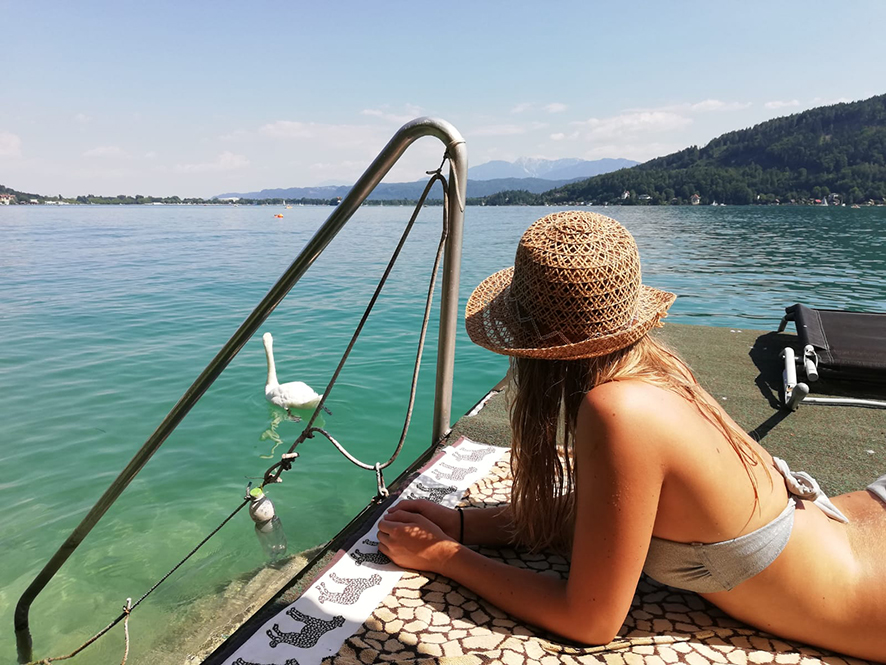
What appears here as a contradiction between talking and doing, Macher was able to prove in her study (2021) as an expression of the behavior-constitutive effect of peer groups. Relevant for concrete action - and thus for the chance of behavioral change towards more sustainability - is the emotionally relevant frame of reference. For example, Macher interviewed people who consciously changed their lifestyle in the direction of sustainability and deliberately renounced symbolic consumption. This personal change process was almost always accompanied by a change in their relationships with their families and a change in their circle of friends. One respondent, for example, reported that her emphatic desire for climate-friendly means of travelling to her holiday destination and thus foregoing air travel led to massive incomprehension and even to the break-up of a friendship ...
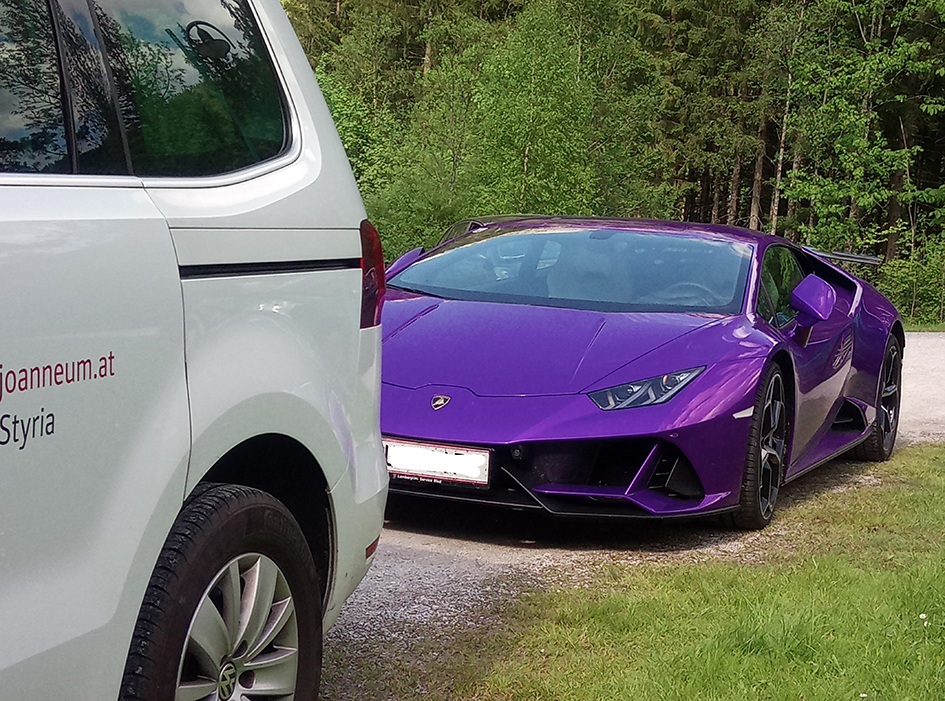
Such strong emotional reactions can be explained by the identity-forming effect of symbolic consumer goods. Products like long-distance travel, SUVs or steaks are energy-intensive, therefore expensive and not within the reach of "everyone". You first have to be able to "afford" them. Their consumption thus represents successful social advancement and belonging to a certain social class. That is why impairments such as demands to consciously do without such goods, or such as massively increased costs are understood as a threat to self-esteem or even as an attack on personal integrity. In the fight against such "expropriations", people are prepared to take to the streets or even resort to more radical means: from the point of view of those affected, it is about the "whole", about their "existence".
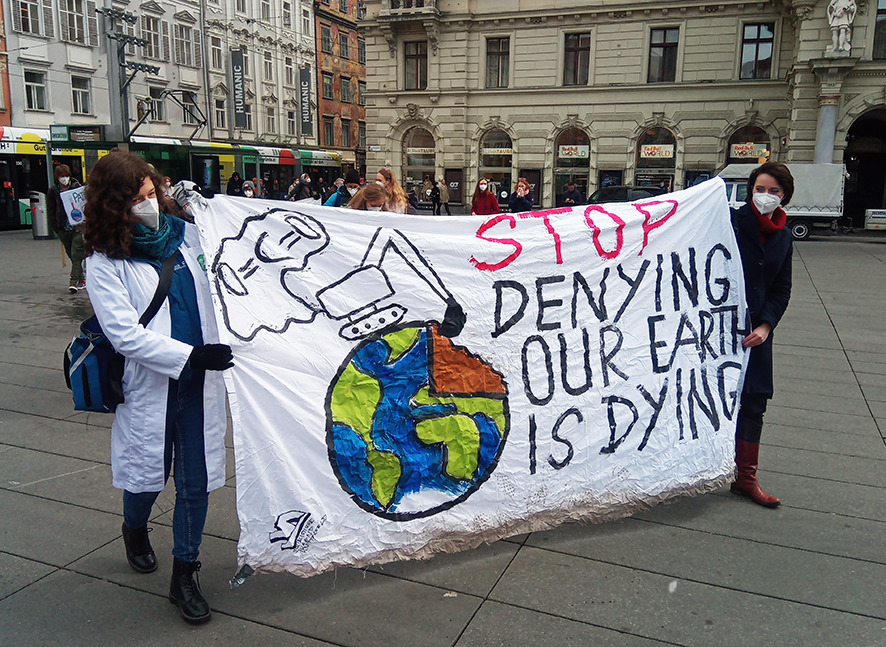
On the surface, this may seem contradictory, even grotesque, when people choose beautiful natural landscapes as holiday destinations but drink water in disposable bottles. They complain about the murderous heat... and take refuge in the cooled SUV. They want total freedom of movement - and thus, in case of a COVID infection, an intensive care unit standing by ... But this apparent contradiction is an expression of a culture of modern life that has been celebrated for decades as a sunny leisure program that has to be as fun, cheap and always available as possible. It was considered the job of elected politicians to "provide" for this. This life behind the beautiful façade was also financed by passing on costs to the socially weak, to former colonial states and to future generations. But what will happen when these generations start to fight back and no longer just demonstrate on Fridays?
The author:
HARALD A. FIEDL is Professor of Sustainability and Ethics in Tourism at FH JOANNEUM, Institute of Health and Tourism Management in Bad Gleichenberg (Austria), and is also an intercultural trainer for the International Peacekeeping Forces of the Austrian Federal Armed Forces.
Sources:
Friedl, H. A. (2018). Grüne Transition als Weihnachtswunder. Warum der Glaube an den Wandel dennoch neurobiologisch wirkt. Green Care 4/2018, 3-5. https://www.academia.edu/82534118/Gr%C3%BCne_Transition_als_Weihnachtswunder_Warum_der_Glaube_an_den_Wandel_dennoch_neurobiologisch_wirkt
Friedl, H. A. (2021). Green Transition to Sustainable (Tourism) Development, an Indispensable Program or an Impossible Utopia? A critical Discourse. In: TOURIST Consortium 2020 (Ed.), 3rd TOURIST Conference on Sustainable Tourism: Building Resilience in Uncertain Times (Conference Proceedings, S. 37-58). Kasetsart University, February 3 – 4.2021 in Bangkok, Thailand. https://www.academia.edu/82534053/Green_Transition_to_Sustainable_Tourism_Development_an_Indispensable_Program_or_an_Impossible_Utopia_A_critical_Discourse
Macher, S. & Friedl, H.A. (2021). COVID-19 as a Catalyst in Education for Sustainable Tourism Development: How do students in the field of tourism plan to live and travel sustainably in future? In: TOURIST Consortium 2020 (Ed.), 3rd TOURIST Conference on Sustainable Tourism: Building Resilience in Uncertain Times (Conference Proceedings). Kasetsart University, February 3 – 4.2021 in Bangkok, Thailand. https://www.academia.edu/82534667/COVID_19_as_a_Catalyst_in_Education_for_Sustainable_Tourism_Development_How_do_students_in_the_field_of_tourism_plan_to_live_and_travel_sustainably_in_future
Macher, Sandra (2020): „Auswirkungen des klimaschonenden Lebensstils auf das jeweilige soziale und wirtschaftliche Leben. Eine Lebensstil-Grundlagenforschung.“ FH JOANNEUM. https://info.bmlrt.gv.at/dam/jcr:3f30f521-9655-437d-a7c9-ff62e2fe6942/Macher_2020_SDG13.pdf
Mörth, L. & Friedl, H. A. (2021). Plant GenZ nach Corona klimafreundlichere Reisen? Tourismus Wissen quarterly 26. https://www.academia.edu/82534158/Mo_rth_and_Friedl_2021_Plant_die_GenZ_nach_Corona_klimafreundliche_Reisen
Mörth, Laurenz (2021): „Auswirkungen von Reisebeschränkungen in Folge von Covid-19 auf die Reisebedürfnisse von Studierenden: Chance für nachhaltigen Tourismus?“ FH JOANNEUM. (Reisebedürfnisse, Reiseverhalten, Klimawandel, Fridays for Future, Covid-19) https://info.bmlrt.gv.at/dam/jcr:6312c65a-37ab-4e95-add2-b3aca1e1e7aa/M%C3%B6rth_2021_SDG12.pdf